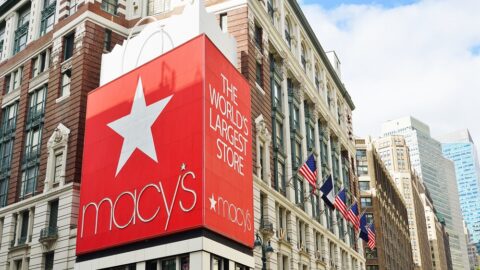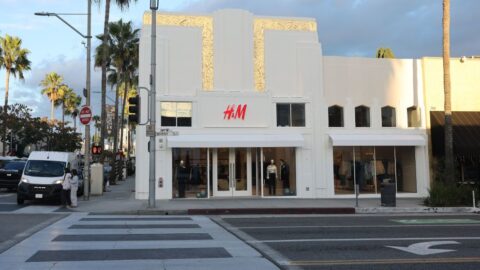This is Part 2 of the Retail TouchPoints Inventory Strategies Report, a two-part feature highlighting best practices and technologies that help retailers improve their inventory management processes. This section will spotlight how best-in-class retailers such as J. C. Penney and Macy’s are leveraging RFID technology. In addition, retail industry experts and analysts will comment on the potential growth of RFID.
The rise of omnichannel retail has put consumers at the center of most all retail strategies, especially as merchants focus more on improving inventory position. With shoppers demanding instant access to products and prices, as well as flexible purchasing and delivery options across channels, retailers must ensure complete inventory visibility both online and in stores.
Radio frequency identification (RFID) has been spotlighted as a leading enabler for more efficient inventory tracking and management. Through RFID technology, a microchip transmits product information, such as item type, manufacturer and serial number, to a scanner or other data collection device, giving store associates a better understanding of what products, colors and sizes are available in specific locations.
In the National Retail Federation report, titled: “Retail Horizons: Benchmarks 2011 — Forecasts 2012,” only a small minority (9%) of surveyed retailers implemented RFID technology during 2011, a 1% increase over 2010. While these results alluded to poor adoption, recent benchmark research and retail success stories indicate increases in adoption and overall interest in RFID.
ABI Research revealed that RFID transponders, readers, software, and services will generate $70.5 billion in revenue from 2012 to the end of 2017. Government, retail, and transportation and logistics are pinpointed as the most valuable sectors, accounting for 60% of accumulated revenue during the next five years, according to the ABI report titled “RFID Market by Application and Vertical Sector.”
“We’re seeing RFID adoption moving gradually,” John Devlin, Senior Practice/Group Director of AutoID and Smart Cards for ABI Research told Retail TouchPoints. “There are many RFID trials taking place, with a variety of retailers experiencing significant savings and improved revenue due to more efficient stock management.”
By implementing RFID, store associates and managers can better track and stock inventory in stores, and make smarter decisions in terms of merchandise ordering and product selection. Additionally, overall loss prevention is improved because product locations are pinpointed and logged throughout the entire brick-and-mortar store. This also helps associates find items faster.
“With RFID, retailers can tally a complete inventory in the morning and know they have in stock every color, size and style they expect to sell that day,” explained Frank Riso, Senior Director of Retail and Hospitality Lead of Motorola Solutions. “Each tag is unique, even for similar garments in a different color or size, so if customers choose to order items online and pick them up in-store ― a decidedly growing trend ― RFID supports the process by allowing associates to find item tags, and thus locations, more efficiently.”
Less Focus On Inventory Management, More On Customer Experiences
Rather than conducting time-consuming product audits and checkups on inventory movement, retailers that utilize RFID can focus more on customer experiences, Nikki Baird, Managing Partner of Retail Systems Research (RSR), told Retail TouchPoints.
“Instant inventory visibility and enhanced product accuracy are the top benefits,” Baird explained. “But what RFID really gives back to the store is time: time to sell, less time looking for inventory, and less opportunity for management errors that lead to stock outs.”
In addition, “there are many customer-facing opportunities for RFID, or some variation of Near Field Communication, that retailers are not leveraging,” she said. “For example, the technology can help customers find specific products, without an associate’s help, which especially is useful for retailers of size-intensive products such as jeans.”
There also are numerous benefits of RFID outside brick-and-mortar stores and throughout the entire global supply chain. At Avery Dennison Corporation, an RFID solutions provider, Mark Hill, VP and GM of Global Innovation and Solutions Development, Retail Branding and Information Solutions, discussed the enterprise-wide benefits of RFID.
“Garment factories and DCs are also able to use RFID to ensure all outgoing shipments are accurate, without the increased cost of labor for manual validation,” Hill explained “As cartons arrive at the Distribution Center (DC), RFID gives visibility into 100% of incoming shipments vs. the ten percent inspection typical at many DCs today, allowing retailers to identify and address discrepancies between what was ordered and what was received. As these shipments arrive at the store, they can be quickly and accurately received, and store associates can get alerts about incoming items that need to move to the sales floor immediately to prevent stock-outs.”
J. C. Penney And Macy’s Showcase The ROI Of RFID
J. C. Penney and Macy’s are among the retailers transitioning to RFID. At the annual Fortune Brainstorm Tech Conference, held July 16-18, 2012, J.C. Penney CEO Ron Johnson announced that the company plans to put RFID tags on its entire inventory, and anticipates a complete implementation by February 2013.
“RFID clearly is a technology that’s been waiting for prime time, based on the cost of the ticket,” Johnson said in an interview with Fortune magazine. “I believe the ticket cost — the increase in the ticket cost versus a Universal Product Code label — is now at a point where the benefits way outweigh the cost of doing it.”
Moreover, RFID adoption will help J. C. Penney fuel its ongoing strategies to enable self-checkout via mobile devices.
“You go to most retail stores, all you see is people doing work to execute the retail strategy. It’s stocking shelves and transacting business,” Johnson told Fortune. “That’s going to all change, because of how we use Wi-Fi, RFID and mobile checkout. You’ll be able to check out anywhere, anytime, from anyone, including yourself, because we’re going to roll out self-checkout to our stores next year — and it’s really cool and it’s really easy, because it’s RFID-based. You don’t have to scan an item. You just throw it down, and there’s the price.”
Macy’s already is reaping the benefits of RFID, according to Marshall Kay, Principal of RFID Sherpas, LLC, a retail consultancy. In the webinar sponsored by Retail TouchPoints, titled “Stocking The Inventory Optimization Toolbox,” Kay shared in-depth metrics into the retailer’s success thus far.
“There is no question that the chain-wide rollouts at Macy’s, Bloomingdales and J. C. Penney have served as the catalyst for significant RFID programs at other leading retailers,” Kay said. “The fact that these rollouts extend well beyond apparel and footwear is really quite exciting.”
According to Macy’s Inc. research the retailer previously conducted one to two barcode cycle counts a year, resulting in a 2% to 3% monthly inventory accuracy deterioration, or about 30% each year. However, since utilizing RFID, Macy’s now completes 12 to 24 cycles a year and experiences an average monthly deterioration of 0.22%, or just 3% to 5% annually.
“To Macy’s and Bloomingdale’s, RFID is a tool to better serve customers and drive sales by ensuring we have the right product in the right place at the right time for our in-store and omnichannel shoppers,” said Tom Cole, Chief Administrative Officer of Macy’s, Inc., in a press statement. “RFID will allow us to more frequently count item-level inventory with precision so our inventory is readily accessible to our customers. This is technology that has proven effective in our testing, and we believe now is the right time to roll out RFID aggressively.”
American Apparel also successfully improved store-level efficiencies by leveraging RFID. Through a partnership with Avery Dennison, the brand obtained an inventory accuracy of 99%, and experienced a 14% boost in sales, compared to non-RFID-enabled stores. Moreover, implementing the technology allowed store operators and associates to better determine inventory availability within each store and quickly locate items misplaced in the stock rooms.
The fashion retailer follows a boutique-style model, with only one of every size, color and style available at a time, “making replenishment and overall speed of replenishment critical,” said Zander Livingston, former-RFID Director of American Apparel in a video case study for Avery Dennison. “Part of the culture at American Apparel is the ability for customers to come in and know that their size, color and style will be represented on the store floor.”
Since adopting RFID tags, readers and tracking software from Avery Dennison, American Apparel has enabled store associates to count items across entire sales floors in less than two hours and validate all necessary replenishments. Previously, this process took approximately six hours to complete.
RFID: At The Tipping Point
With the rise of cross-channel browsing and buying, and “buy online, pick up in-store” fulfillment models, flexibility and efficiency are key to inventory management success. While RFID adoption is slowly gaining traction among large retailers, smaller merchants are taking note of leading adopters, and recognizing the possible benefits.
“Smaller retailers currently don’t have the money to invest in the infrastructure for RFID just yet, but I do believe there will be a filter effect in which it will trickle down,” Devlin explained. “There is going to be an increased focus on pilots and trials, but I would expect companies to gear up for mass rollouts next year.”
As more top-tier retailers deploy RFID, the technology will gain more momentum, added Kevin Permenter, Research Associate for the supply chain branch of Aberdeen Group. “Are we at a tipping point? We are getting close,” he said. “Even if we are not there yet, with the growth rates we are seeing in our surveys, which is resting between 20% and 30%, that point is not far away.”
Click here to access Part 1 of the “Inventory Strategies Report.”












